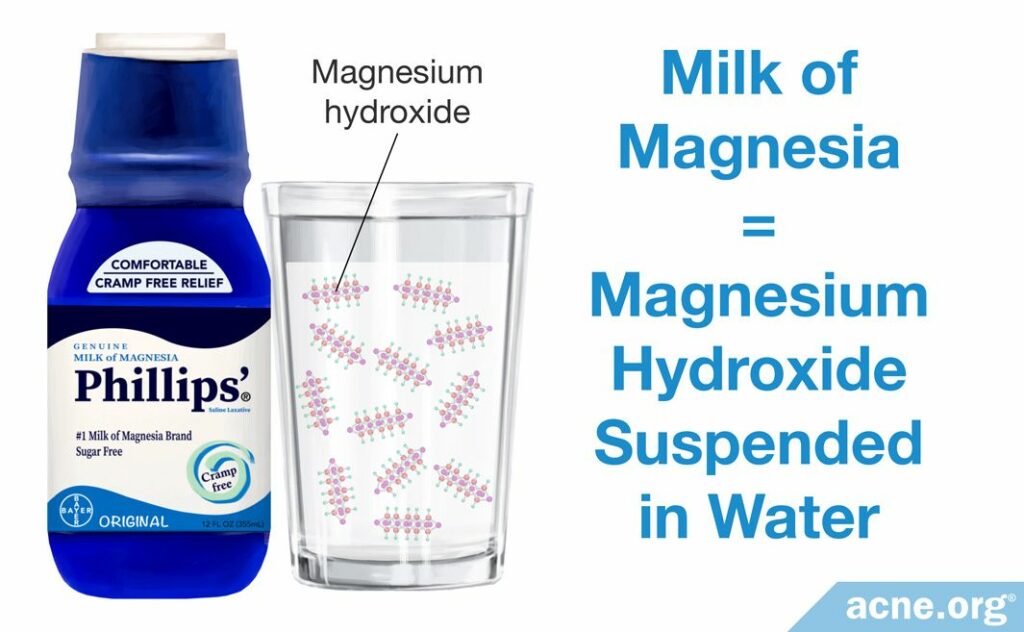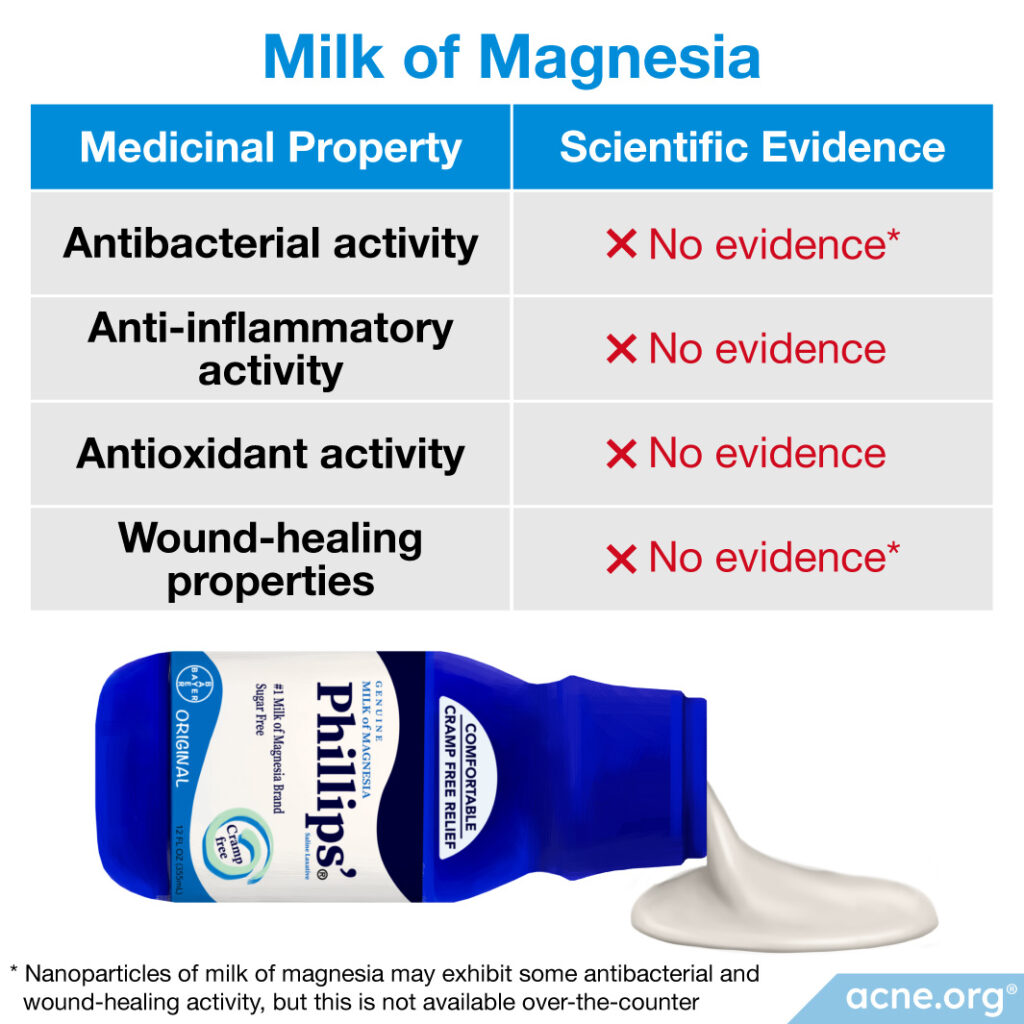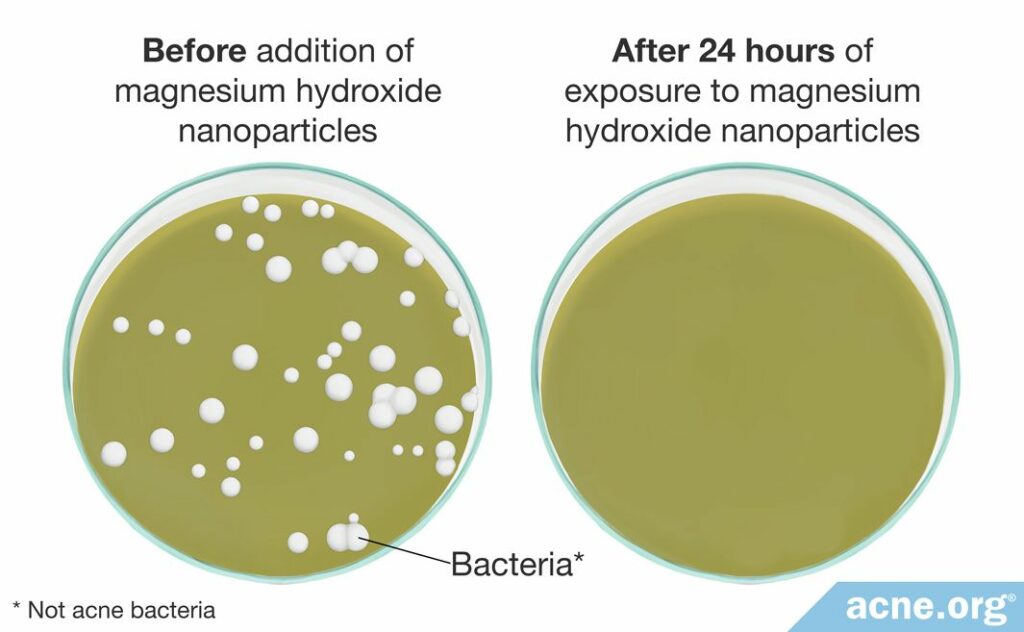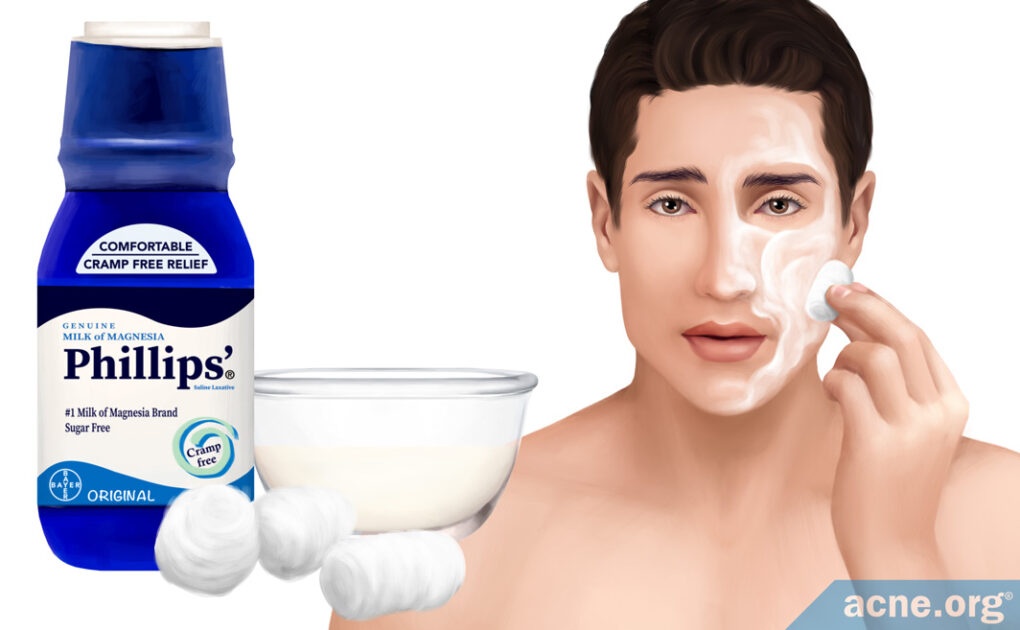There Is No Scientific Evidence That Over-the-counter Milk of Magnesia Products Would Help

The Essential Info
You can find milk of magnesia at any drugstore. It is an oral remedy for treating heartburn and stomach ailments. Some acne sufferers try applying milk of magnesia to the skin topically in the hope that this will improve acne. However, there is no scientific evidence to date that shows any potential benefit of applying over-the-counter milk of magnesia products to reduce acne.
The Bottom Line: The vast majority of home remedies show little promise in acne treatment, but even among unimpressive home remedies, milk of magnesia stands out for having such little evidence to back it up. It’s probably best to save your milk of magnesia for when you get heartburn or upset stomach.

The Science
- What Is Milk of Magnesia?
- What Is Milk of Magnesia Used For?
- Does Milk of Magnesia Work Topically for Acne?
- Side Effects of Milk of Magnesia Applied Topically
- The Bottom Line
Milk of magnesia is an over-the-counter oral medication for relieving indigestion, constipation, heartburn, and upset stomach. Although milk of magnesia is only sold for oral use, some people with acne apply it topically in an attempt to treat acne breakouts and improve the appearance of acne scars. However, there is currently no scientific evidence that regular milk of magnesia has any effect on acne.
What Is Milk of Magnesia?

Milk of magnesia is a milky-looking liquid consisting of a white solid called magnesium hydroxide suspended in water.
What Is Milk of Magnesia Used For?
Milk of magnesia is approved for oral use as a(n):
- Antacid: Treats symptoms caused by too much stomach acid, such as heartburn, upset stomach, or indigestion
- Laxative: Relieves constipation1
Does Milk of Magnesia Work Topically for Acne?
To date, no studies have tested milk of magnesia as a topical treatment for acne. To be effective against acne, milk of magnesia would need to possess at least one of the following medicinal properties:
- Antibacterial activity: An ability to kill bacteria like C. acnes, a type of bacteria that plays a role in the development of acne
- Anti-inflammatory activity: An ability to reduce redness, itching, swelling, and soreness, all of which are hallmarks of acne breakouts
- Antioxidant activity: An ability to remove free radicals, which are naturally occurring toxins that can build up in the body and contribute to acne
- Wound-healing properties: An ability to speed up the healing of wounds in the skin. Acne lesions, scientifically speaking, are small wounds.2
In most cases, scientists simply haven’t tested milk of magnesia to see whether it possesses these medicinal properties. For example, researchers know that magnesium by itself has some mild anti-inflammatory and wound-healing activity, but no one has tested milk of magnesia to see whether it might be similarly beneficial.3

The only exception is two small studies that showed that nanoparticles of milk of magnesia can kill some types of bacteria. However, over-the-counter milk of magnesia doesn’t use nanoparticles. Regardless, let’s take a quick look at that research.
The research on milk of magnesia and antibacterial activity
Scientists have tested the ability of nanoparticles of magnesium hydroxide, which are extremely tiny particles of the same substance found in milk of magnesia, to fight bacteria. They found that nanoparticles of milk of magnesia can kill some types of bacteria.4-6 Unfortunately, the researchers did not test the nanoparticles on the type of bacteria that makes acne worse, called C. acnes. It is also important to note that milk of magnesia currently on the market consists of much larger particles, not nanoparticles. In other words, the results of these two studies do not change the fact that milk of magnesia currently found on the market has no proven antibacterial activity.

Bacteria in a petri dish before (left) and 24 hours after (right) the addition of magnesium hydroxide nanoparticles. After 24 hours, magnesium hydroxide has killed the bacteria. Note: This bacteria is not acne bacteria.4
Expand to read details of studies

The study was published in 2014 in the journal Materials Letters. The researchers found that nanoparticles of milk of magnesia kill some types of bacteria, probably by entering the bacteria cells and destroying them from the inside. The researchers wrote, “we found that [magnesium hydroxide] nanoparticles were effective antibacterial agents against several bacteria.”4

A second study, published in the journal Biomimetics in 2019, confirmed the antibacterial activity of magnesium hydroxide nanoparticles by testing them on E. coli bacteria.6 Again, this study does not tell us whether magnesium hydroxide nanoparticles would work against C. acnes.
The research on milk of magnesia and wound healing
Scientists have also recently tested the ability of nanoparticles of magnesium hydroxide to speed up wound healing. One study found that applying bandages with these nanoparticles to wounds helped the wounds to heal faster. The scientists speculated that when applied to wounds, the magnesium hydroxide nanoparticles separated into magnesium ions and hydroxide ions. Magnesium ions are known to help with blood vessel growth and the formation of collagen, which is an important protein that makes the skin firm.7 Both of these effects would contribute to faster wound healing.
Since acne lesions are small wounds, this suggests that nanoparticles of magnesium hydroxide might also help acne lesions to heal faster. However, as we have already seen, milk of magnesia found on the market contains much larger particles, and there is no evidence that those larger particles speed up wound healing.
Side Effects of Milk of Magnesia Applied Topically
Because the research on applying milk of magnesia topically is very limited, we cannot say whether milk of magnesia is safe for topical use. However, patient reports suggest that topically applied milk of magnesia might cause skin irritation.
The Bottom Line
In conclusion, we have no evidence to date that milk of magnesia applied topically has any effect on acne. It is possible that future research may find some benefit to applying milk of magnesia to acne-prone skin. However, currently we cannot recommend this as a home treatment for acne.
References
- Magnesium hydroxide, https://en.wikipedia.org/wiki/Magnesium_hydroxide
- Oberemok, S. S. & Shalita, A. R. Acne vulgaris, I: pathogenesis and diagnosis. Cutis 70, 101 – 105 (2002). https://www.ncbi.nlm.nih.gov/pubmed/12234155
- Nourbakhsh, S. M., Rouhi-Boroujeni, H., Kheiri, M. et al. Effect of topical application of the cream containing magnesium 2% on treatment of diaper dermatitis and diaper rash in children: A clinical trial study. J Clin Diagn Res 10, WC04-WC6 (2016). https://pubmed.ncbi.nlm.nih.gov/26894161/
- Dong, C. et al. Study on antibacterial mechanism of Mg(OH)2 nanoparticles. Mater Lett 134, 286 – 289 (2014). https://www.sciencedirect.com/science/article/abs/pii/S0167577X1401369X
- Dong, C. et al. Antibacterial study of Mg(OH)2 nanoplatelets. Mater Res Bull 46, 576 – 582 (2011). https://www.researchgate.net/publication/251484730_Antibacterial_study_of_MgOH_2_nanoplatelets
- Halbus, A. F., Horozov, T. S. & Paunov, V. N. Controlling the antimicrobial action of surface modified magnesium hydroxide nanoparticles. Biomimetics (Basel) 4, 41 (2019). https://pubmed.ncbi.nlm.nih.gov/31242662/
- Truskewycz, A., Truong, V. K., Ball, A. S., Houshyar, S., Nassar, N., Yin, H., Murdoch, B. J., Cole, I. Fluorescent magnesium hydroxide nanosheet bandages with tailored properties for biocompatible antimicrobial wound dressings and pH monitoring. ACS Appl Mater Interfaces 13, 27904-27919 (2021). https://pubmed.ncbi.nlm.nih.gov/34105937/
 Acne.org Products
Acne.org Products